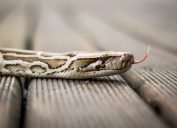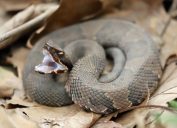The No. 1 Place Snakes Love to Hide Before They Strike
Make sure you're careful whenever you suspect a reptile could be nearby this area.
Everyone knows it's best for your safety never to approach any wild animal. But in some cases, you may not realize you're encroaching on one's territory when you're doing something as simple as yard work or organizing your garage—especially timid creatures like snakes. In one recent case, a young boy in Florida was bitten while playing at home, while a Kentucky woman came face-to-face with a reptile hiding in an unusual place. But according to experts, even though you may not always be able to spot them from afar, there are certain places snakes often hide where they're more likely to strike. Read on to see which spots may deserve a little extra caution.
READ THIS NEXT: The No. 1 Sign There's a Snake in Your Closet.
Not all snakes are necessarily bad to have around your property.
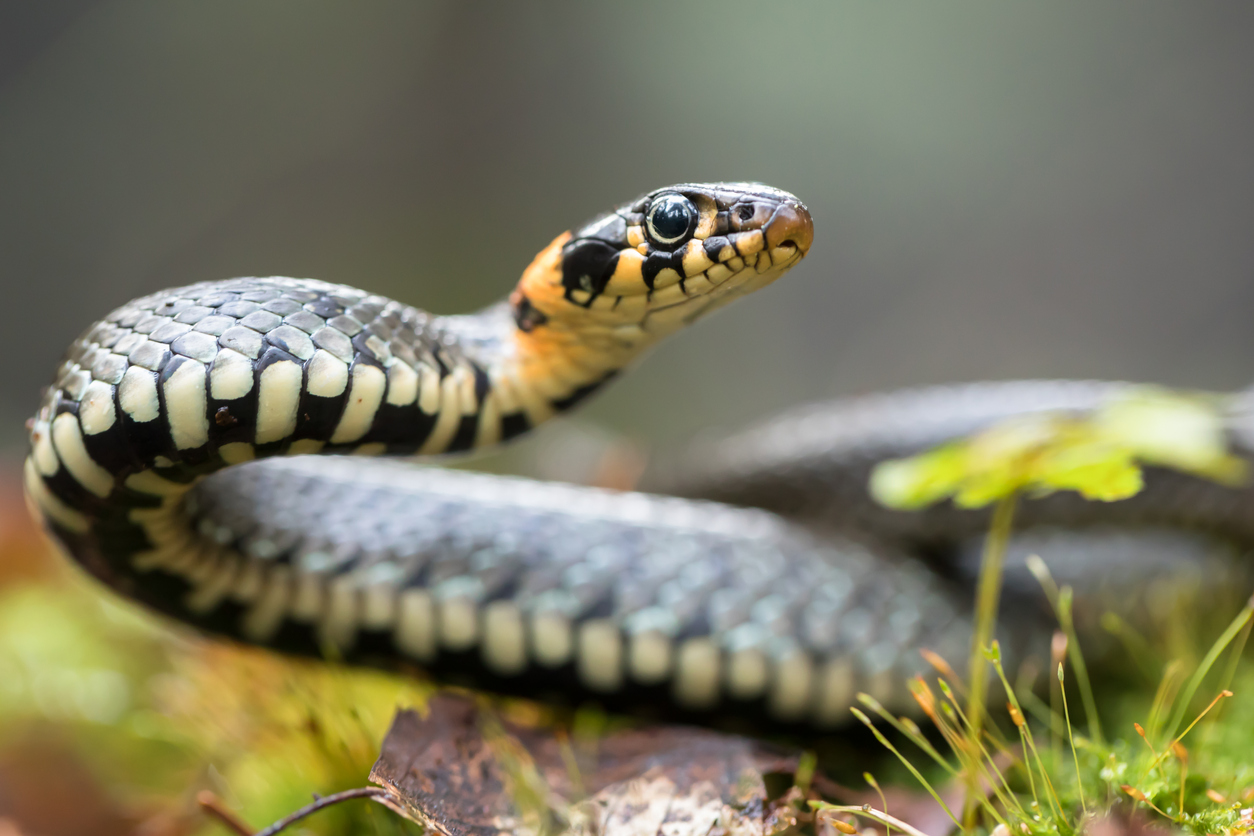
It's understandable to feel that anything that slithers is a potential risk to you and your family. But according to experts, most of what people believe about snakes is nothing more than a bad reputation. Besides their typically unaggressive temperament, they can also be somewhat of a helping hand.
"Although they can be icky and frightening, most snakes are actually very beneficial to your home's ecosystem," Donnie Shelton, owner of Triangle Lawn Care in Raleigh, North Carolina, tells Best Life. "If you notice a garter snake or a king snake, then these can actually be your garden's biggest ally! Garter snakes eat slugs which can damage your plants, and king snakes will eat rodents as well as kill more dangerous venomous snakes such as copperheads!"
Unfortunately, that's not to say a snake won't defend itself if it feels threatened when you accidentally come upon it. But luckily, the majority of common snake species in the U.S. aren't venomous, and modern medical care has made fatal encounters with the reptiles incredibly rare. According to the Centers for Disease Control and Prevention (CDC), out of the 7,000 to 8,000 venomous snake bites yearly, only about five result in death. And knowing where snakes are most likely to try and hide out can help you avoid accidentally disturbing one.
Most snakes hide in certain areas around lawns before they strike.

Maintaining an outdoor space can mean a lot of backbreaking work and DIY projects that keep your hands literally in the dirt. But according to experts, you're also most likely to come across a snake that's trying to hide while taking care of your lawn or cleaning up certain items.
"A favorite hiding spot for snakes is underneath objects like rocks, logs, and leaves. This helps them stay hidden and also keeps them protected," experts from lawn care and pest control company The Turf Doctor tell Best Life. "If you're working in your yard and come across a snake, it's likely that it's normally hiding underneath something nearby."
Unfortunately, unintentionally disturbing a hiding snake can lead to accidents in such situations. Recently, this happened when a five-year-old boy from Texas was bitten by a venomous copperhead while picking up leaves with his family.
RELATED: For more up-to-date information, sign up for our daily newsletter.
Neglecting other types of yard work could also make you more likely to come across a snake.
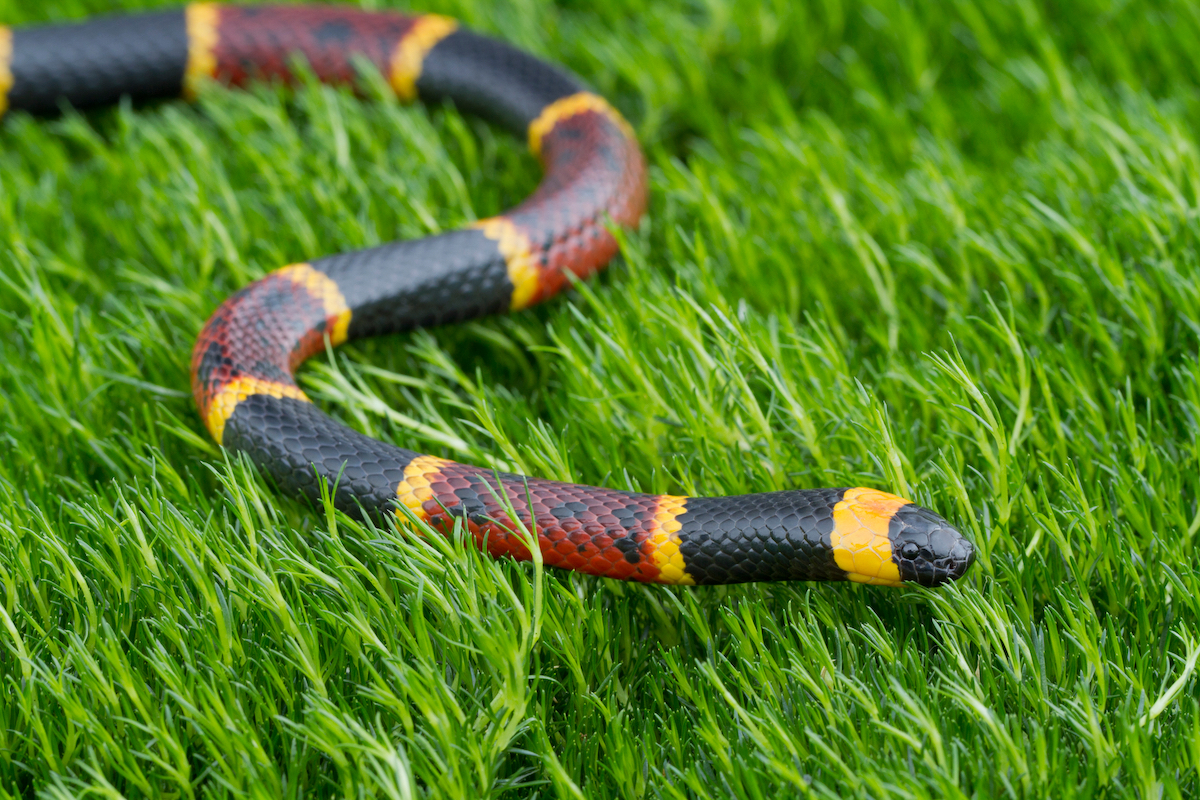
But it's not just woodpiles and rock decorations that can be risky when it comes to snakes. Experts warn that neglecting one other important chore can make it more likely for you to cross paths with them.
"One of the most common places you'll find snakes is in tall grass. This provides them with ample coverage and makes it difficult for potential prey (or predators) to spot them," experts from Custom Turf tell Best Life. "If you have tall grass in your yard, be sure to cut it as soon as possible to avoid inviting snakes to take shelter."
It's best to avoid certain types of lawn decor if you want to make your yard less inviting to snakes.
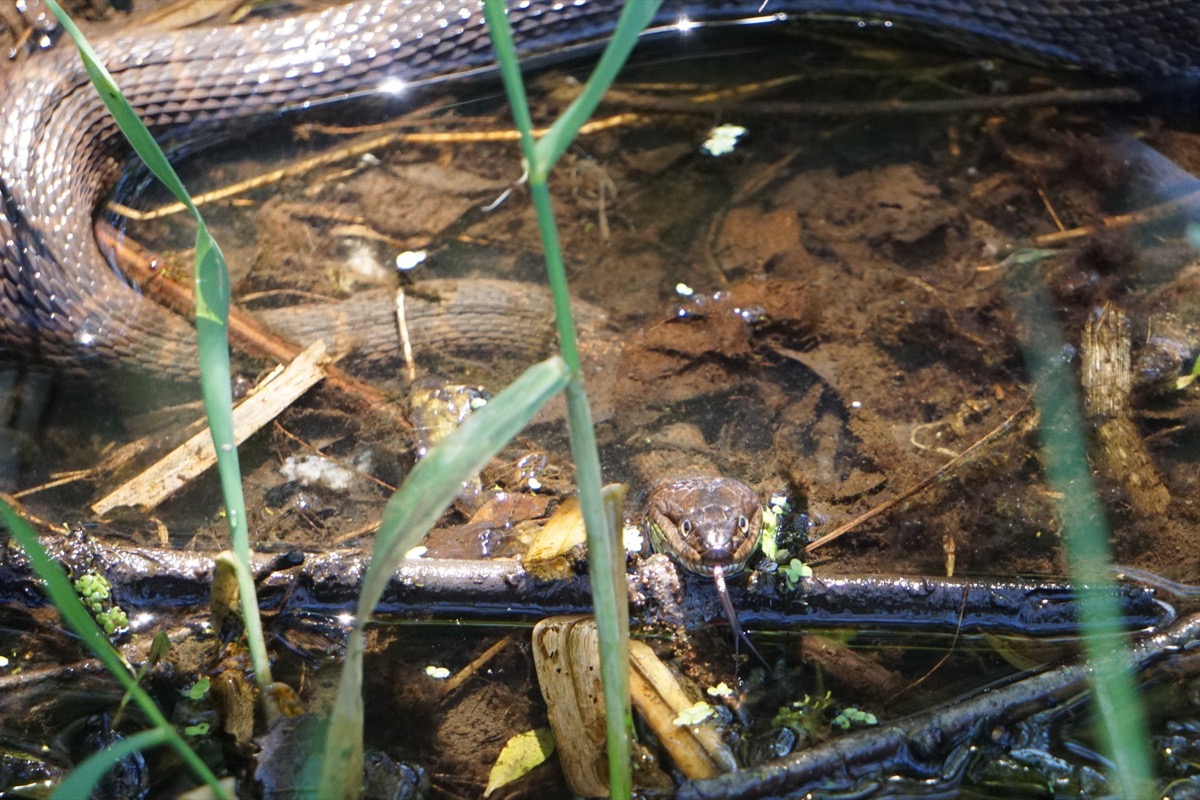
It's only natural for a homeowner to want to make their yard a personalized expression of their tastes. However, experts warn that opting for certain lawn features could give snakes a place to hide out and hunt.
"Snakes like to hide where they can have easy access to food and shelter," experts from Unlimited Lawn Care tell Best Life. "If you have a pond around your yard with surrounding rock features it is likely that a snake will hide in there. This gives them quality hiding spots within the rocks and also easy access to frogs and fish that may live in the pond."
READ THIS NEXT: How a Snake Can Get Into Your Home Through Your Toilet.

